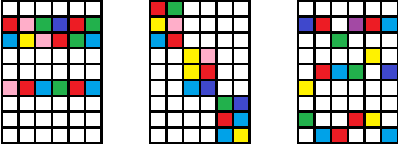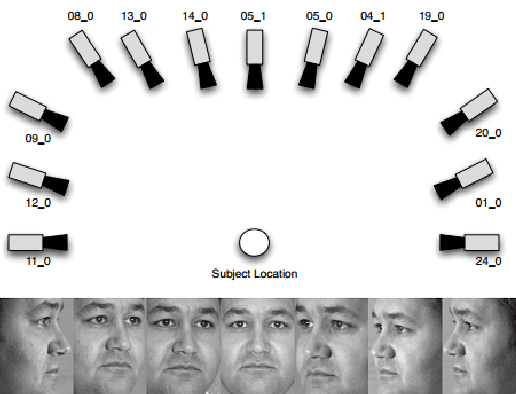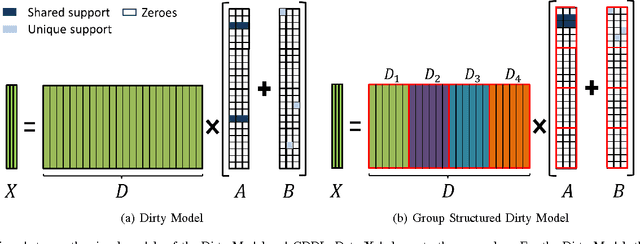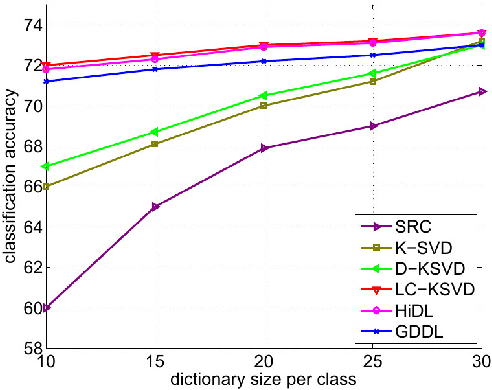Yuanming Suo
Multi-task Image Classification via Collaborative, Hierarchical Spike-and-Slab Priors
Jan 30, 2015



Abstract:Promising results have been achieved in image classification problems by exploiting the discriminative power of sparse representations for classification (SRC). Recently, it has been shown that the use of \emph{class-specific} spike-and-slab priors in conjunction with the class-specific dictionaries from SRC is particularly effective in low training scenarios. As a logical extension, we build on this framework for multitask scenarios, wherein multiple representations of the same physical phenomena are available. We experimentally demonstrate the benefits of mining joint information from different camera views for multi-view face recognition.
Structured Dictionary Learning for Classification
Jun 08, 2014



Abstract:Sparsity driven signal processing has gained tremendous popularity in the last decade. At its core, the assumption is that the signal of interest is sparse with respect to either a fixed transformation or a signal dependent dictionary. To better capture the data characteristics, various dictionary learning methods have been proposed for both reconstruction and classification tasks. For classification particularly, most approaches proposed so far have focused on designing explicit constraints on the sparse code to improve classification accuracy while simply adopting $l_0$-norm or $l_1$-norm for sparsity regularization. Motivated by the success of structured sparsity in the area of Compressed Sensing, we propose a structured dictionary learning framework (StructDL) that incorporates the structure information on both group and task levels in the learning process. Its benefits are two-fold: (i) the label consistency between dictionary atoms and training data are implicitly enforced; and (ii) the classification performance is more robust in the cases of a small dictionary size or limited training data than other techniques. Using the subspace model, we derive the conditions for StructDL to guarantee the performance and show theoretically that StructDL is superior to $l_0$-norm or $l_1$-norm regularized dictionary learning for classification. Extensive experiments have been performed on both synthetic simulations and real world applications, such as face recognition and object classification, to demonstrate the validity of the proposed DL framework.
 Add to Chrome
Add to Chrome Add to Firefox
Add to Firefox Add to Edge
Add to Edge